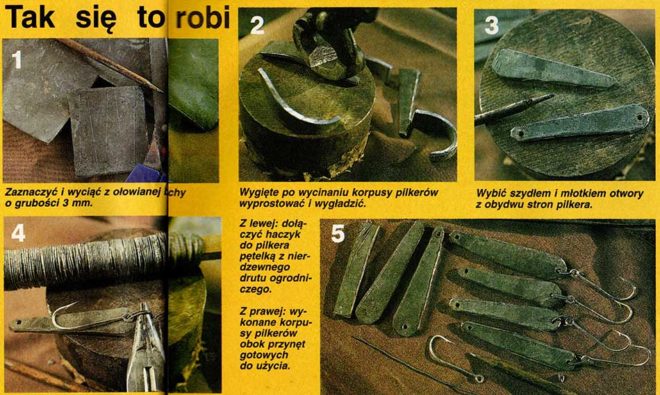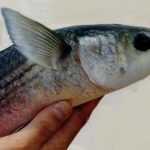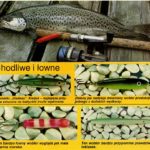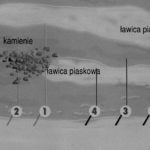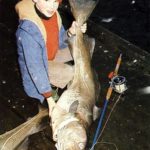Rudolf chętnie łowi podczas urlopu w morzu. Aby spinningowanie ze skalistych wybrzeży Norwegii nie było zbyt drogie, autor sam wykonuje swoje „oszczędnościowe” pilkery. W Skandynawii bowiem każdy rzut to dorsz albo zaczep…
Po długiej podróży nareszcie widać morze (właściwie jego część, gdyż wzdłuż wybrzeża ciągną się niezliczone wysepki). Małe rybackie wioski przytulone są do surowych skał. Coraz węższe drogi i coraz mniej samochodów. W końcu ruch samochodowy prawie zupełnie zamiera. Woda, wszędzie woda. Co chwilę upewniałem się, czy przypadkiem nie jest to słodka woda. Na skraju wodorostów wyraźnie widać ślady po przypływach i odpływach. W jednej z morskich zatok obserwowaliśmy polującą fokę. Zwierzę raz za razem wystawiało łeb nad wodę i nieufnie na nas spoglądało. Pomiędzy dwiema wyspami utworzył się wąski kanał, którym podczas odpływu płynęła woda. Początkowo nie chciałem w to uwierzyć, jednak tam gdzie prąd wody uchodził do morza – wyskakiwały łososie. Pod mostem także huczał prąd odpływu. Trochę poniżej woda krąży w kółko. Czy ja dobrze widzę, czy to fatamorgana? Przecież tam wyskakują z wody maleńkie rybki. Natychmiast w tym miejscu pojawiły się mewy, niedługo potem – ja…
Łowię na spinning o długości 1,80 m, żyłkę 0,25 mm i 10-gramowego minipilkera. Przynęta szybuje w powietrzu na odległość około 60-70 metrów. Doliczyłem już do 15 i ciągle nie ma dna. Lekkie podciągnięcie. Branie! Ryba natychmiast ucieka w jeszcze większą głębinę. Pompuję ją do góry. Półtorakilogramowy dorsz. Żaden okaz, ale hol na lekkim sprzęcie był emocjonujący. Następny rzut i znowu dorsz, tym razem trochę mniejszy. Trzeci rzut i trzeci dorsz. Nie mam zamiaru Was zanudzić, ale to jeszcze nie koniec. Co rzut czuję jakiś opór – albo branie albo zaczep. Trochę dużo tych zaczepów – a przecież łowię na pilkery uzbrojone niewielkimi pojedynczymi haczykami. Ale o tym za chwilę.
Co do pilkera
Większość złowionych ryb udaje mi się bez trudu odhaczać. Zabieram ze sobą tylko dwa dorsze, gdyż jest to w zupełności wystarczająca porcja mięsa na posiłek dla całej mojej rodziny. Patroszenie trwa jedną chwilę. Duże kraby wypełzają jak czołgi z wodorostów i walczą ze sobą o wrzucone do wody wnętrzności ryb. Tuż obok leżą na dnie różnej wielkości jeżowce oraz rozgwiazdy. Po wejściu do wody, pod gumiakami trzeszczą skorupki omułków jadalnych. Dorsze smakowały wyśmienicie. Po jedzeniu znowu wędkowałem. I chociaż ryby przez cały czas doskonale brały, po jakimś czasie zrobiło mi się jakoś nieswojo. Uświadomiłem bowiem sobie, ile kosztuje mnie ta cała zabawa. Każdy zaczep oznaczał stratę przynęty. W praktyce wyglądało to mniej więcej tak, jakbym co dziesięć minut dobrowolnie wrzucał do wody osiem złotych. Tyle bowiem zapłaciłem za każdego małego pilkera.
Podczas tego urlopu straciłem cały posiadany zapas tych przynęt, co do jednego pilkera. Krew mnie zalewa, gdy przypomnę sobie, ile kosztowały mnie wszystkie przynęty, które zerwałem podczas pierwszego kilkunastodniowego pobytu w Norwegii. Ze względu na to, że Norwegia jest dla mnie najatrakcyjniejszym pod względem wędkarskim krajem w całej Europie, ciągle jeżdżę łowić tam ryby i to praktycznie co roku. Zabieram jednak już ze sobą znacznie więcej pilkerów niż za pierwszym razem.
Resztki od blacharza
Mimo to nie ponoszę już tak dużych kosztów. Od tamtej wyprawy na ryby sam zacząłem wykonywać moje minipilkery. Dzięki temu, że wychodzą znacznie taniej, nie odczuwam już tak boleśnie kolejnych zaczepów.
Od znajomego blacharza kupuję dosłownie za grosze resztki 3-milimetrowej ołowianej blachy. Blacha o tej grubości daje się w miarę dobrze przycinać solidnymi starymi nożyczkami.
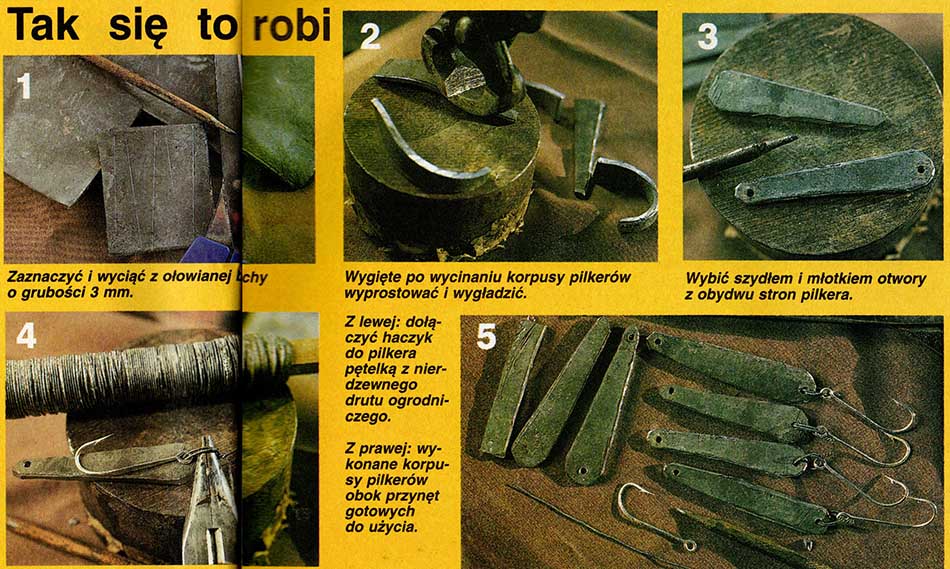 Najpierw wycinam z niej płytki o wymiarach 10 x 6 cm (zdjęcie 1). Ponieważ podczas cięcia blacha trochę się podgina, prostuję ją, wygładzam, a następnie zaznaczam na płytce skośnymi liniami kontury przyszłych pilkerów (zdjęcie 2). Koniec pilkera, do którego przyczepia się haczyk powinien być trochę szerszy. Ponownie wygładzam korpusy i zaokrąglam rogi pilkerów nożyczkami. Następnie kładę kawałki blachy na twardym podłożu i wybijam w nich (z obydwu stron, żeby nie tworzyła się ostra krwędź) młotkiem i szydłem otwory do zamontowania haczyka oraz do przywiązania żyłki (zdjęcie 3).
Najpierw wycinam z niej płytki o wymiarach 10 x 6 cm (zdjęcie 1). Ponieważ podczas cięcia blacha trochę się podgina, prostuję ją, wygładzam, a następnie zaznaczam na płytce skośnymi liniami kontury przyszłych pilkerów (zdjęcie 2). Koniec pilkera, do którego przyczepia się haczyk powinien być trochę szerszy. Ponownie wygładzam korpusy i zaokrąglam rogi pilkerów nożyczkami. Następnie kładę kawałki blachy na twardym podłożu i wybijam w nich (z obydwu stron, żeby nie tworzyła się ostra krwędź) młotkiem i szydłem otwory do zamontowania haczyka oraz do przywiązania żyłki (zdjęcie 3).
